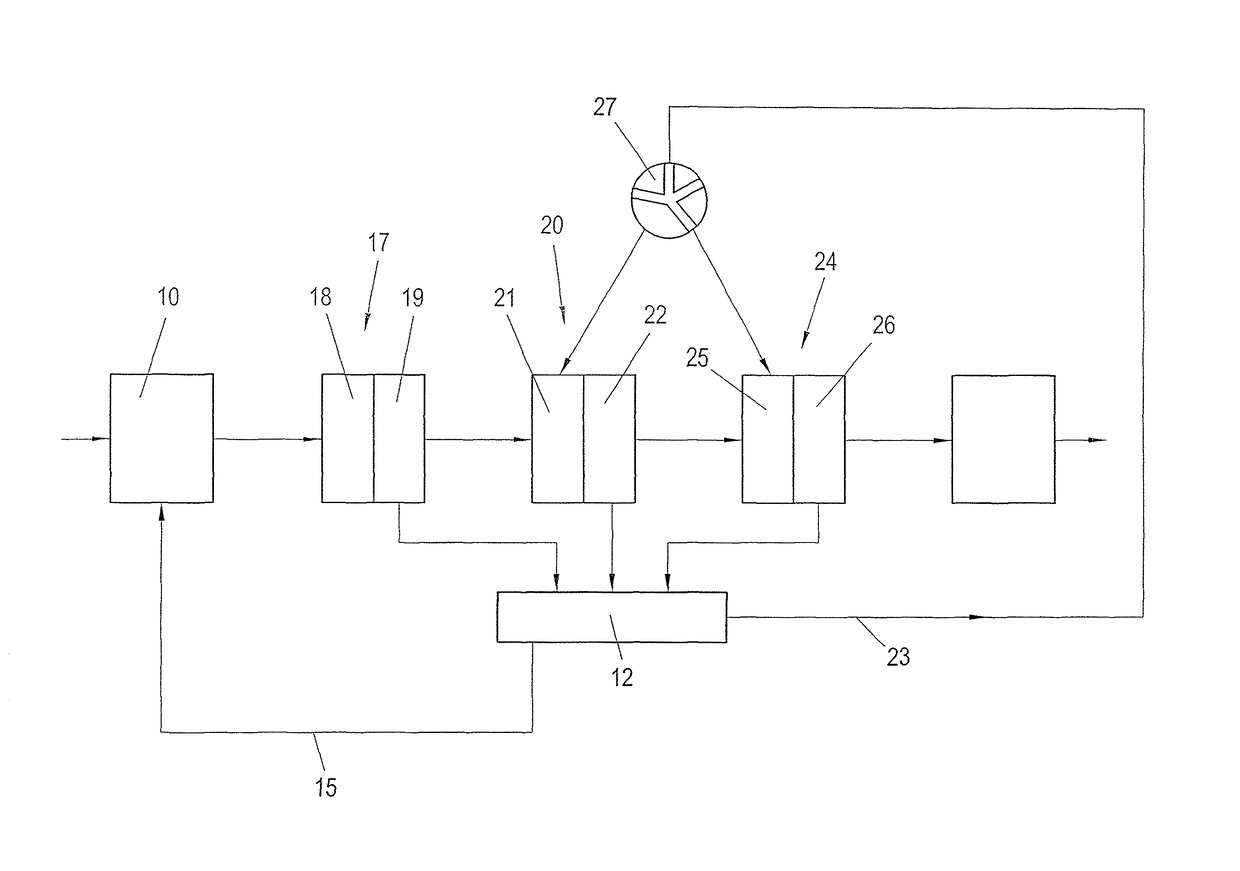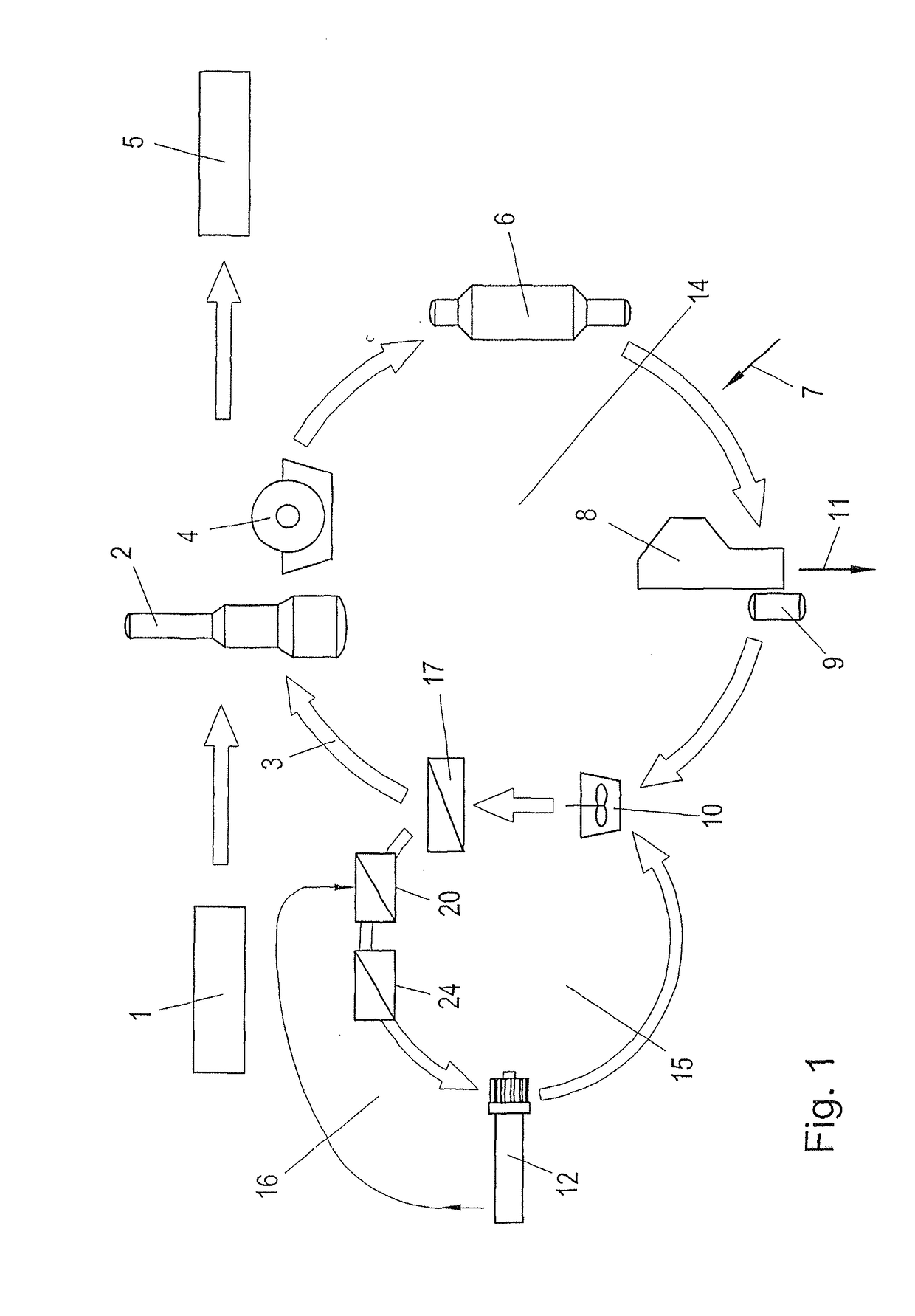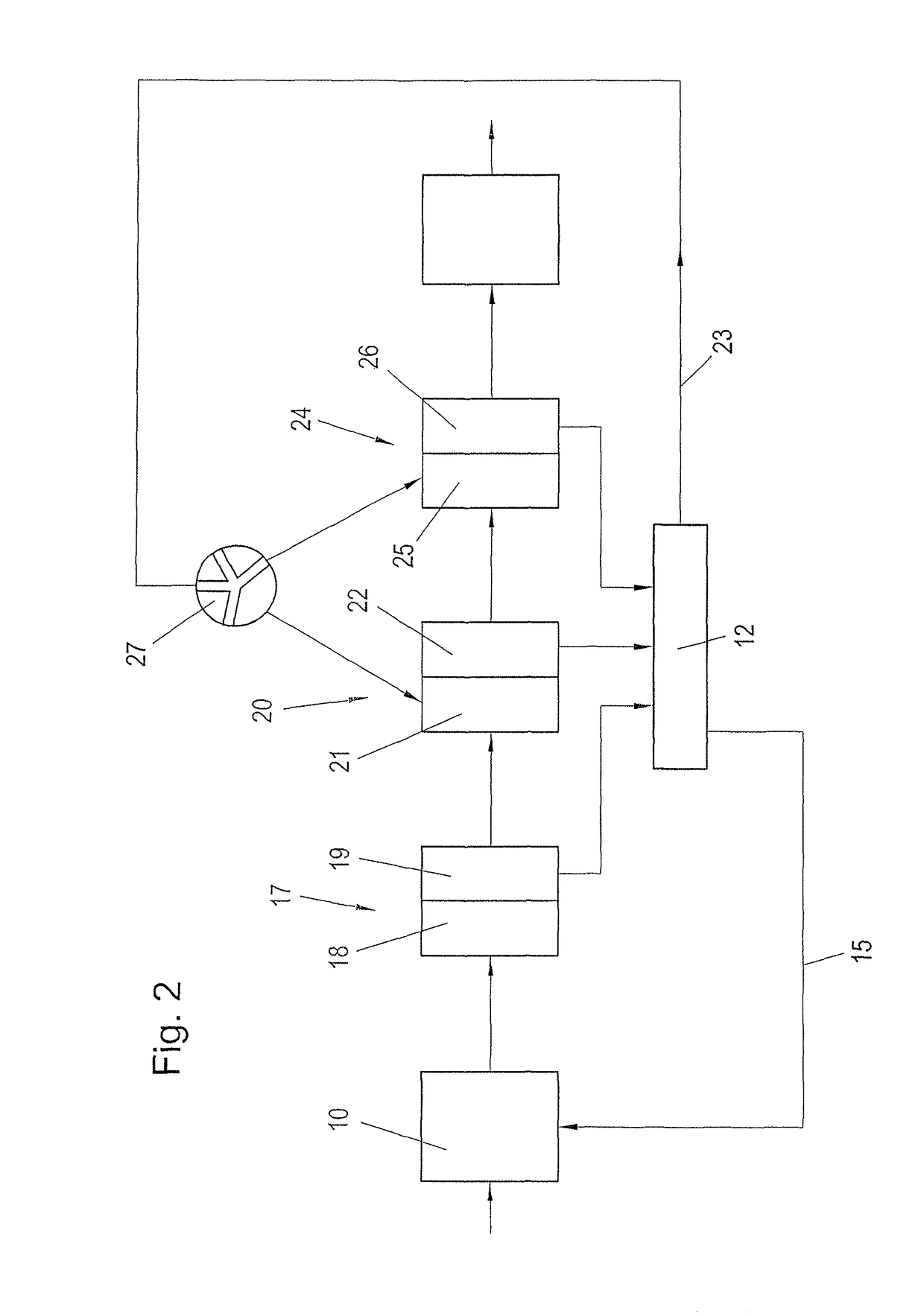Process for recausticizing green liquor
a green liquor and process technology, applied in the field of recausticizing green liquor, can solve the problems of substantial losses, disruption of the process, and disruption of the subsequent process, and achieve the effects of preventing sedimentation, slow and quasi-quantitative conversion of remaining calcium oxide, and efficient removal of calcium oxid
- Summary
- Abstract
- Description
- Claims
- Application Information
AI Technical Summary
Benefits of technology
Problems solved by technology
Method used
Image
Examples
example 1
[0035]1 l of an industrial green liquor with a total alkali content of 165 g / l (calculated as NaOH) and a sulphidity of 35% was heated to 80° C. and 74 g of industrial quicklime (90% CaO) was added. The mixture was thermostatted to 101° C. and stirred for 2 h, and then evacuated using a glass fibre filter on a Buchner funnel using a water-jet vacuum.
[0036]The residue on the filter, a lime mud, was stirred with water at 70° C., the bottom was gassed with CO2 through a glass frit and then evacuated as described above. Next, the dry matter content of the lime mud was determined gravimetrically.
[0037]The test was carried out a total of 7 times, wherein the parameters of stirring time, temperature and carbon dioxide addition were varied and both the dry matter content of the lime mud and the pH of the filtrate were determined as a result. The results are shown in Table 1.
[0038]
TABLE 1StirringTemper-Dry matterperiodatureGassingcontentTestMin° C.g CO2%pH1A57007313.01B5700.47711.51C5700.880...
example 2
[0040]1 l of an industrial green liquor with a total alkali content of 165 g / l (calculated as NaOH) and a sulphidity of 35% was heated to 80° C. and 78 g of industrial quicklime (80% CaO) was added. The mixture was thermostatted to 101° C. and stirred for 2 h, and then evacuated using a glass fibre filter on a Buchner funnel using a water-jet vacuum.
[0041]The residue on the filter, a lime mud, was stirred with water at 70° C., the bottom was gassed with CO2 through a glass frit and then evacuated as described above. Next, the dry matter content of the lime mud was determined gravimetrically.
[0042]The test was carried out a total of 6 times, whereby only the carbon dioxide addition was varied and both the dry matter content of the lime mud and the pH of the filtrate were determined as a result. The results are shown in Table 2.
[0043]
TABLE 2StirringTemper-Dry matterperiodatureGassingcontentTestMin° C.g CO2%pH2A57006513.42B5700.46813.02C5700.87012.52D5701.27411.92E5701.67910.72F5702.08...
PUM
| Property | Measurement | Unit |
|---|---|---|
| temperature | aaaaa | aaaaa |
| temperature | aaaaa | aaaaa |
| temperature | aaaaa | aaaaa |
Abstract
Description
Claims
Application Information
 Login to View More
Login to View More - R&D
- Intellectual Property
- Life Sciences
- Materials
- Tech Scout
- Unparalleled Data Quality
- Higher Quality Content
- 60% Fewer Hallucinations
Browse by: Latest US Patents, China's latest patents, Technical Efficacy Thesaurus, Application Domain, Technology Topic, Popular Technical Reports.
© 2025 PatSnap. All rights reserved.Legal|Privacy policy|Modern Slavery Act Transparency Statement|Sitemap|About US| Contact US: help@patsnap.com



